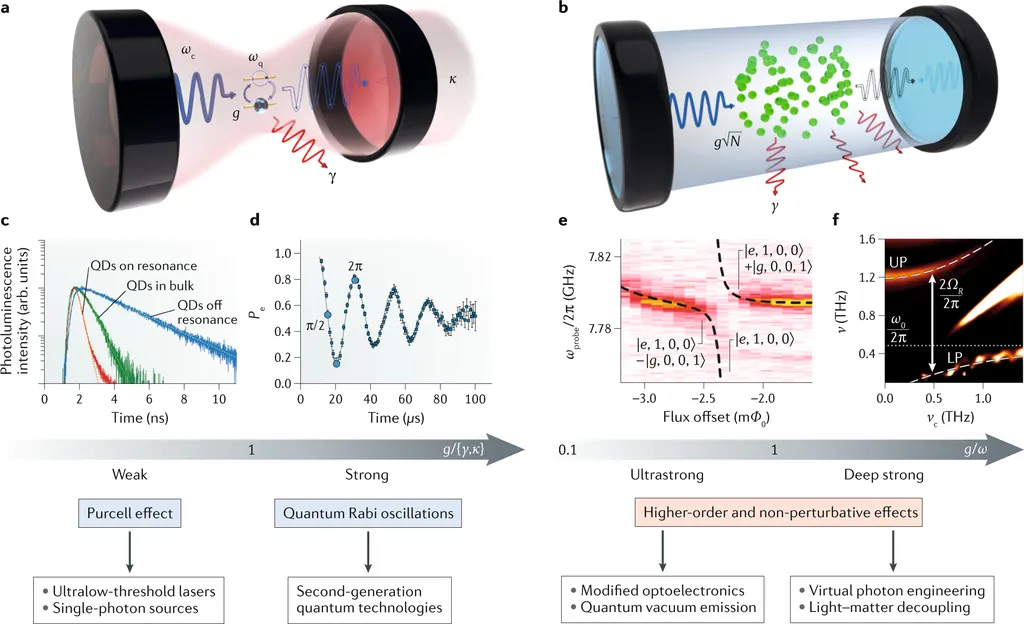Researchers from Rice University, the University of Texas at Austin, and other institutions have made a significant advancement in the field of light-matter interactions, with potential implications for the energy sector. The team, led by Junichiro Kono and Aditya D. Mohite, has demonstrated a novel method to control the strength of coupling between light and lattice vibrations, known as phonons, in a terahertz cavity.
The study, published in the journal Nature Photonics, focuses on lead halide perovskites, a class of materials known for their exceptional optoelectronic properties. The researchers embedded these materials in nanoslot cavities and observed a structural phase transition that allowed them to reversibly tune the phonon-photon coupling strength. This phase transition, occurring at a critical temperature of 162.5 K, altered the lattice symmetry and activated a new phonon mode in the low-temperature phase.
By using terahertz time-domain spectroscopy, the team identified three polariton branches above the critical temperature and an additional branch below it. Polaritons are hybrid states of light and matter that arise from strong coupling between photons and matter excitations. The researchers accurately reproduced the full dispersion of these polariton branches using a multimode Hopfield model, confirming that all normalized coupling strengths remained in the ultrastrong coupling regime.
The practical applications of this research for the energy sector are promising. Ultrastrong coupling between light and matter can enhance the efficiency of optoelectronic devices, such as solar cells and light-emitting diodes (LEDs). By demonstrating symmetry-controlled tuning of this coupling, the researchers have opened up new avenues for designing and optimizing these devices. Furthermore, the ability to reversibly tune the coupling strength could lead to the development of novel energy storage and conversion technologies.
In summary, the researchers have achieved in situ control of phonon-photon coupling strength by leveraging the symmetry-changing structural phase transition in lead halide perovskites. This breakthrough could pave the way for more efficient and versatile optoelectronic devices, contributing to advancements in the energy industry.
This article is based on research available at arXiv.

